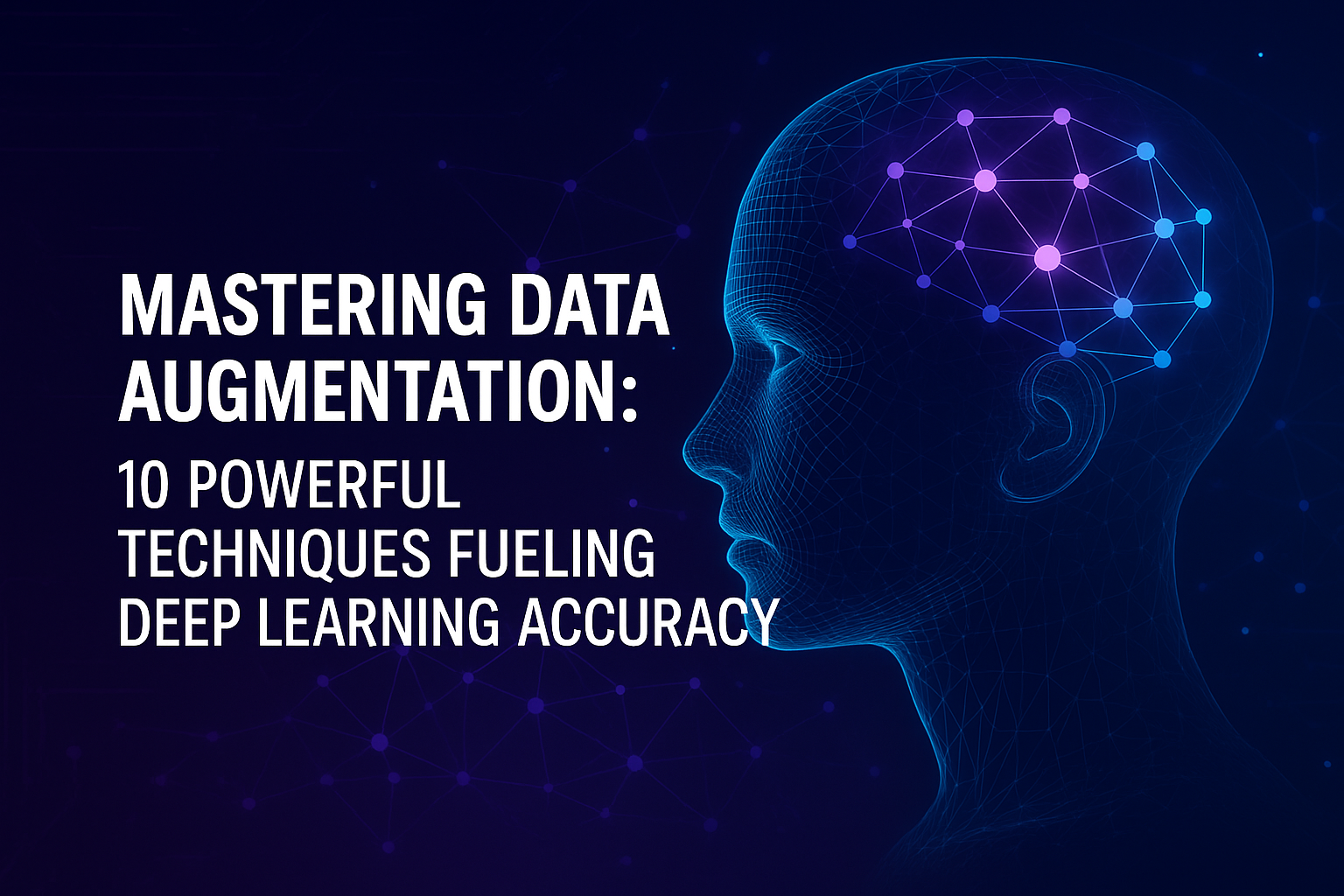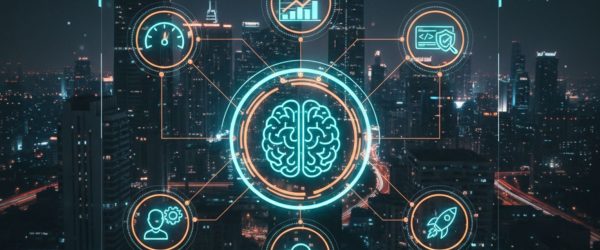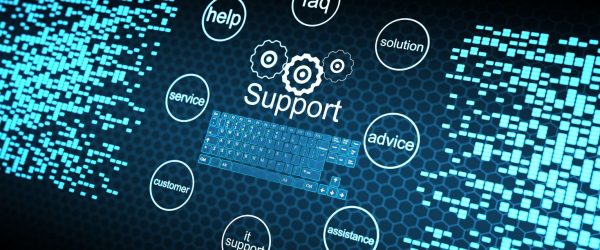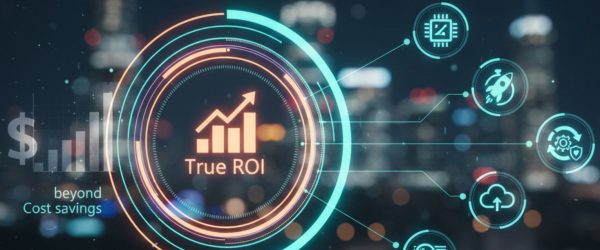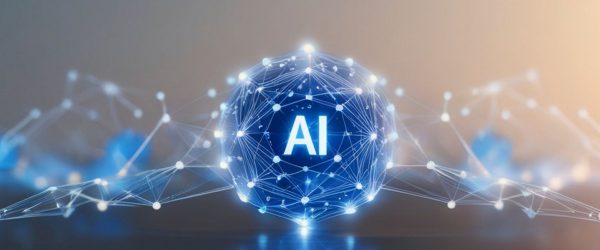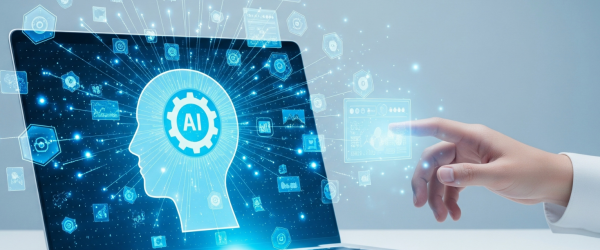Introduction to Data Augmentation in Deep Learning
In the world of deep learning, data is everything. The more diverse and comprehensive your dataset, the better your model performs. But collecting vast amounts of labeled data is time-consuming, expensive, and often impractical. That’s where data augmentation steps in.
Data augmentation is a strategy to artificially increase the size and quality of your training dataset using label-preserving transformations. Whether you’re flipping images, translating sentences, or adding background noise to audio, these techniques help deep learning models become more robust and less prone to overfitting.
Why Is Data Augmentation Crucial for Deep Learning Models?
Data augmentation isn’t just a neat trick—it’s a game-changer in training high-performing models. Let’s explore why it’s essential:
✔ Tackling Overfitting
Overfitting happens when your model learns to perform exceptionally well on training data but fails miserably on unseen data. Data augmentation introduces variety, ensuring your model doesn’t memorize but generalizes.
✔ Improving Model Generalization
By simulating new data points, augmented datasets help models make sense of patterns beyond the training examples. This leads to higher accuracy in real-world applications.
✔ Working with Limited Datasets
Not every organization has access to massive labeled datasets. With data augmentation, even small datasets can train competent models by leveraging creative transformation techniques.
10 Cutting-Edge Data Augmentation Techniques
Let’s dive into 10 powerful augmentation methods that are reshaping AI capabilities across industries:
1. Image Flipping and Rotation
A simple horizontal flip or 90-degree rotation can dramatically change the model’s perception, especially in object detection and classification tasks.
- Horizontal Flip: Mirrors the image
- Vertical Flip: Upside-down transformation
- Rotation: Typically between -45° to +45°
2. Scaling, Cropping, and Translation
These techniques help teach spatial invariance:
- Scaling: Resizes images to a new dimension
- Cropping: Focuses on specific image sections
- Translation: Shifts the image along the x/y-axis
3. Color Jittering and Brightness Adjustment
By tweaking brightness, contrast, hue, or saturation, the model learns to recognize objects under varying lighting conditions.
4. Random Erasing
This technique randomly masks a region of an image to simulate occlusion. It’s especially helpful in robust object detection.
5. CutMix and MixUp
- CutMix: Combines two images by cutting a patch from one and pasting it into another.
- MixUp: Blends two images and their labels together.
These methods improve classification robustness and reduce noise sensitivity.
6. Noise Injection
Adding Gaussian, salt-and-pepper, or speckle noise prepares models for real-world, noisy environments.
7. Adversarial Training
Augmenting data using adversarial examples helps models detect and withstand malicious inputs, increasing security in AI-based systems.
8. GAN-Based Synthetic Data Generation
Generative Adversarial Networks (GANs) can produce highly realistic synthetic data, enabling training in scarce or sensitive environments like medical imaging.
9. Text Data Augmentation (NLP)
Text data can be enhanced using:
- Synonym replacement
- Back-translation
- Contextual word insertion using BERT
Great for sentiment analysis or chatbot training.
10. Audio Augmentation Techniques
For speech and audio models:
- Time-stretching
- Pitch shifting
- Adding background noise
These improve performance in voice recognition systems like Siri or Alexa.
Real-World Applications of Data Augmentation
Let’s explore how data augmentation is transforming industries:
In Computer Vision
- Facial recognition (e.g., with flipped or occluded images)
- Medical imaging (limited MRI or CT scan data)
- Object detection in autonomous vehicles
In Natural Language Processing
- Enhancing chatbot training
- Sentiment classification with limited data
- Detecting spam or hate speech
In Speech Recognition
- Training voice assistants with varied accents and noise
- Call center analytics with background noise simulation
Tools and Libraries for Data Augmentation
You don’t need to code augmentation from scratch. Here are powerful tools:
TensorFlow and Keras
Use ImageDataGenerator or tf.image for image transformations.
PyTorch and Albumentations
torchvision.transformsfor standard methods- Albumentations for fast, flexible image augmentation
NLP Libraries: nlpaug and TextAttack
nlpaug: Synonym replacement, spelling errors, back-translationTextAttack: Useful for adversarial NLP attacks and defenses
Challenges and Limitations of Data Augmentation
Despite its benefits, data augmentation isn’t flawless:
- Can introduce label noise
- May generate unrealistic samples
- Computational overhead when applied on-the-fly
- Not all techniques are equally effective for every model
Best Practices for Implementing Data Augmentation
- Match techniques with model type (e.g., audio vs image vs NLP)
- Avoid over-augmentation—it can hurt accuracy
- Use visualization to monitor effects
- Combine multiple techniques for richer datasets
- Benchmark performance before and after augmentation
FAQs
What is the purpose of data augmentation in deep learning?
To artificially expand datasets, reduce overfitting, and improve model generalization using label-preserving transformations.
Is data augmentation only used for images?
Not at all. It’s also applied in text, audio, video, and even sensor data.
Can data augmentation reduce overfitting?
Yes. It introduces variation, preventing models from memorizing training data.
What are the most used libraries for augmentation?
Popular ones include Albumentations, ImageDataGenerator, nlpaug, TextAttack, and imgaug.
Is synthetic data reliable for training models?
If generated carefully (e.g., using GANs), synthetic data can be nearly as effective as real data for training.
How does GAN help in data augmentation?
GANs generate realistic, high-resolution synthetic data that fills in gaps in the original dataset—especially valuable in medicine, retail, and defense.
Conclusion
Data augmentation isn’t just a bonus—it’s a strategic necessity in deep learning. It democratizes AI by making smaller datasets useful and allows models to better understand the messy, complex real world. Whether you’re building a vision app or training an NLP bot, mastering these techniques can elevate your model’s performance to new heights.
So next time you’re low on data—augment, don’t abandon.

